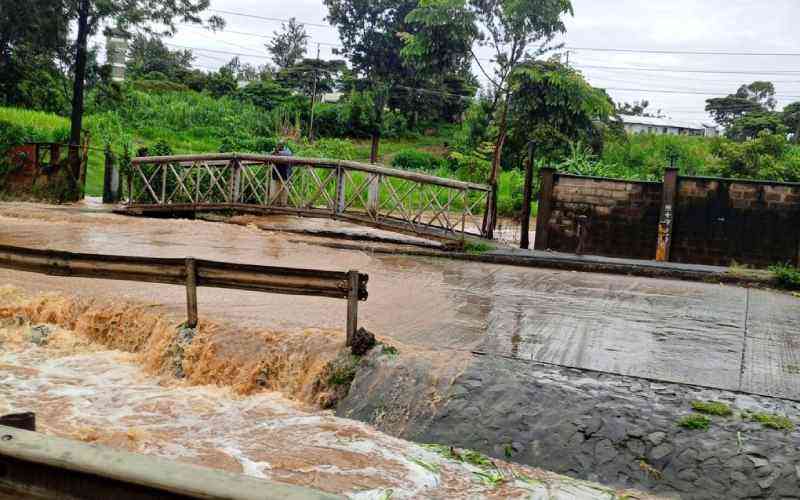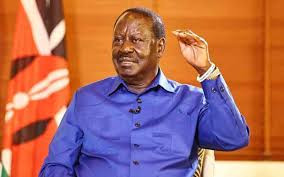It is often said that there is a thin line between the private and public lives of politicians and their families. This is especially critical in the media where elite people in society are wont to make news.
While the private lives of people who are genuinely private should be respected, there is the idea in journalism that once you have put yourself in the public domain then you are wont to suffer constant media scrutiny. However, there are occasions when one’s privacy should be respected, especially when they are sick, grieving or both.
Thus while last Sunday’s (March 5) The Standard on Sunday’s headline – Raila: Why I fear for my daughter – was disturbing, and given there was no where in the story where Raila Odinga himself was quoted, it demonstrates the challenges media and journalists face when covering public figures, their spouses, children and relatives.
It is especially challenging when that person is Odinga’s daughter who has acquired a public persona given her announcement that she would contest the Kibra parliamentary seat in the August elections.
Granted, the story was scanty on detail, and relied on numerous anonymous sources. But given that Rosemary is a public figure, there will be numerous times when her privacy is impinged upon.
Forfeited rights
Of course the mere fact that she is a public figure does not mean she has forfeited her right of privacy, nor can she be the subject of commercial exploitation. In effect, her privacy must be respected, particularly in situations where there is (emotional or other) suffering as is the case with Rosemary, her parents and siblings.
To better illustrate the point, we take the case of Diana, Princess of Wales, the first wife of Prince Charles, the current heir to the British throne. She was tormented by the paparazzi and journalists because every aspect of her life was apparently news. Until her death in a terrible car crash that also killed her boyfriend Dodi Al Fayed on August 31, 1997, Princess Diana led a miserable life, unable to go out without the paparazzi jostling for her pictures. During her funeral, Earl Spencer, Diana’s brother, accused the media, mostly the tabloid newspapers, of murdering the princess.
“I always believed the press would kill her. It would appear that every proprietor and editor of every publication that has paid for intrusive and exploitative photographs of her, encouraging greedy and ruthless individuals to risk everything in pursuit of Diana’s image, has blood on their hands today,” Earl Spencer said.
This was a serious indictment on the media, and tabloids promised never to deal with paparazzi, never to intrude on the privacy of the princes William and Harry.
Media intrusion
Since then, newspapers have behaved well, and William and Harry have grown to be adults with little media intrusion into their lives although the scrutiny on Prince Harry’s life suggests the intrusion might be creeping back.
However, media scholar Peter Cole notes that Princess Diana was “adept at press manipulation, ensuring their presence when she wanted publicity for one of her good causes, wanted a point put across in her enduring feud with the Royal Family, or simply wanted to upstage [Prince] Charles”. Kenyan politicians behave in a similar manner.
In a mediated world, politicians are often built and sometimes destroyed by the media. The relationship is symbiotic: politicians get the coverage and thus free publicity, and the media the sources, subjects and consequently content to sell the news and other media products.
However, this relationship is not always rosy. This is because politicians regularly seek (mostly positive) publicity, and employ spin doctors (sometimes former journalists although even current scribes are known to work for politicians, political parties and other outfits) to manage their images and news. Thus spin doctors always seek to do two things: propaganda and news-management. In essence then, while we fully empathise with the Odinga family, and Rosemary as she recuperates in South Africa, there is no denying that she courts publicity and has been happy to use the media whenever it is beneficial to her. Accordingly, you cannot wholly blame the media and journalists for covering her illness as supporters and Kenyans are keen to know the current status, the goings-on in her life and the state of her health. In a way, the public now owns her, both as an aspiring politician, and as the daughter of one of the most famous (and popular?) politicians. Thus there is a thin line between her public and private life and persona.
Stay informed. Subscribe to our newsletter
The family should understand that the media is not often driven by malice but public interest which (sometimes) determines choice of stories and pictures. However, the media and editor’s choices are clouded by assumptions that any public figure is of public interest.
However, public interest, as presented and understood by the media and journalists, smirks of universalism when it is clear that not everything considered public interest really interests the public, or at least not all the time.
Thus the Odinga family feels done in by the media in this instance and condemned the story as “a fraudulent exercise of journalism, which attempts to pass fictitious suppositions of the writer on the medical condition of Rosemary Odinga and on the position of the Odinga family on matters surrounding her health and career as truths. ... It is shameful that the writer has sacrificed common decency and trampled over Rosemary’s rights to privacy, both standard requirements of professional journalism, in order to fabricate a story for his selfish gratification and sales for the company.”
In addition to the denunciation, the family threatened to sue, calling the story an invasion of privacy, defamatory, and full of malicious falsehoods. While it is the family’s right to denounce the story (and indeed any such articles) and seek correction, Raila Odinga perhaps knows that he is treading on dangerous grounds given his need and desire for media coverage and publicity, particularly in this election year.
That said, the media should not wantonly break or trump on the cardinal rules of journalism, including privacy, in their zeal for ‘juicy’ stories. Unless of course there is a compelling reason to do so.
he Media Council of Kenya last Wednesday launched the Guidelines for Elections Coverage 2017. The guidelines are part of attempts to ensure that the media are responsible, accountable, fair, accurate, impartial and balanced during their coverage of this year’s elections.
However, as it was noted during the function which was attended by various officials – the chair of the Independent Electoral and Boundaries Commission Wafula Chebukati, National Cohesion and Integration Commission chair Francis ole Kaparo, and Communication Authority of Kenya Director General Francis Wangusi – the launch of the guidelines is one thing and adhering to them is another.
In other words, while the guidelines set the parameters for media coverage of the elections, it’s upon the media and journalists to choose their words carefully, to fact-check, not to promote hate-speech, to be responsible, etc.
And as Kaparo indicated, Kenya belongs to all of us. He was rather categorical: “Andikeni vile mnavyotaka! Shauri yenu!” he said in Swahili. Literally translated: “Write whatever you want, it’s up to you!”. That statement has many connotations, read it however you want.
—The writer lectures at the School of Journalism and Mass Communication, University of Nairobi.
[email protected]
 The Standard Group Plc is a
multi-media organization with investments in media platforms spanning newspaper
print operations, television, radio broadcasting, digital and online services. The
Standard Group is recognized as a leading multi-media house in Kenya with a key
influence in matters of national and international interest.
The Standard Group Plc is a
multi-media organization with investments in media platforms spanning newspaper
print operations, television, radio broadcasting, digital and online services. The
Standard Group is recognized as a leading multi-media house in Kenya with a key
influence in matters of national and international interest.
 The Standard Group Plc is a
multi-media organization with investments in media platforms spanning newspaper
print operations, television, radio broadcasting, digital and online services. The
Standard Group is recognized as a leading multi-media house in Kenya with a key
influence in matters of national and international interest.
The Standard Group Plc is a
multi-media organization with investments in media platforms spanning newspaper
print operations, television, radio broadcasting, digital and online services. The
Standard Group is recognized as a leading multi-media house in Kenya with a key
influence in matters of national and international interest.








